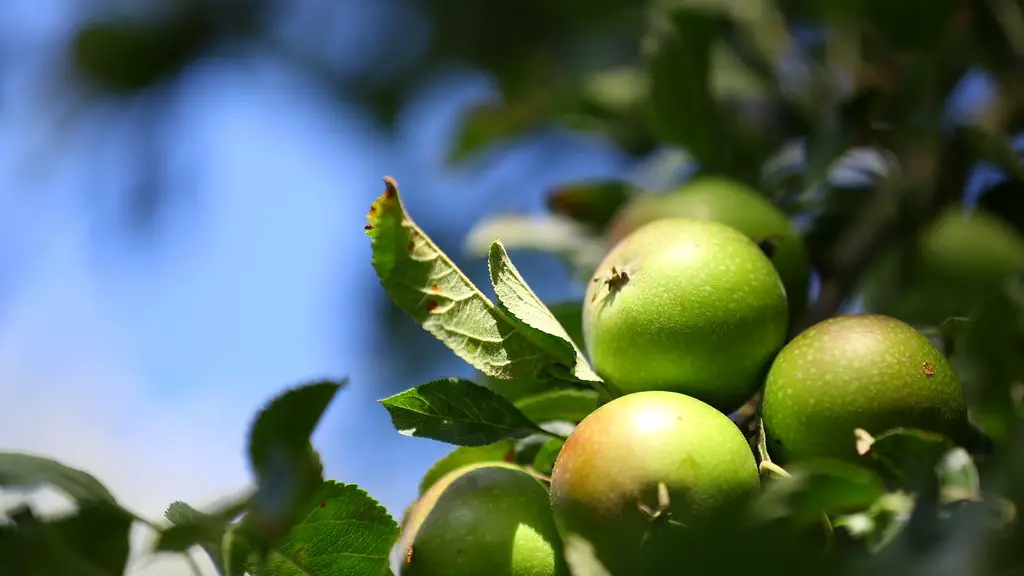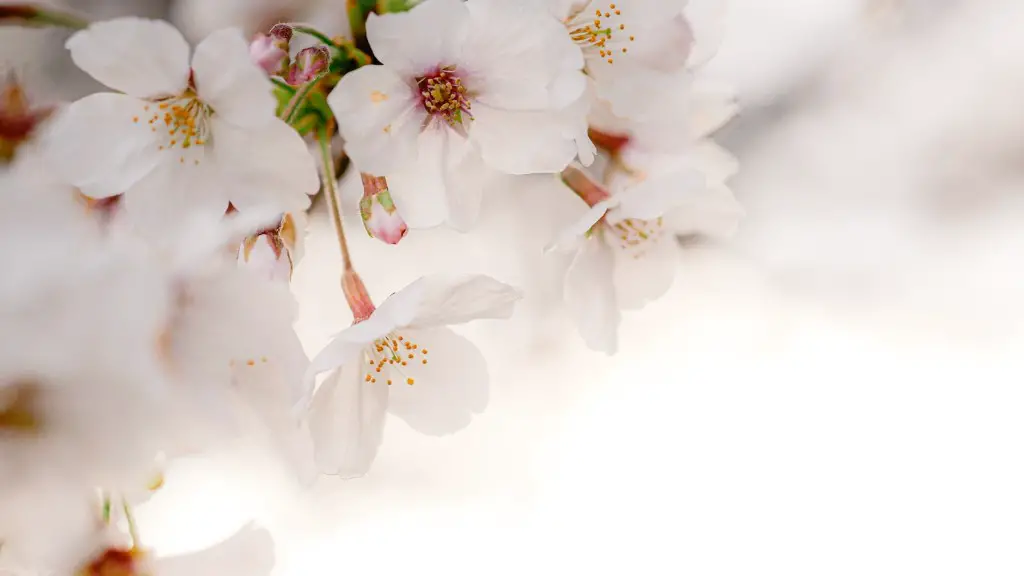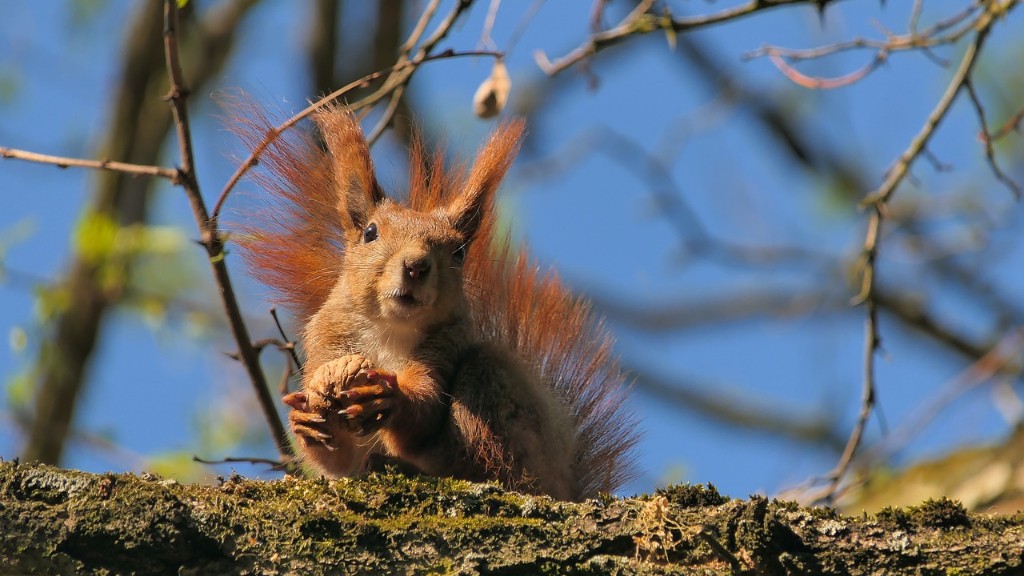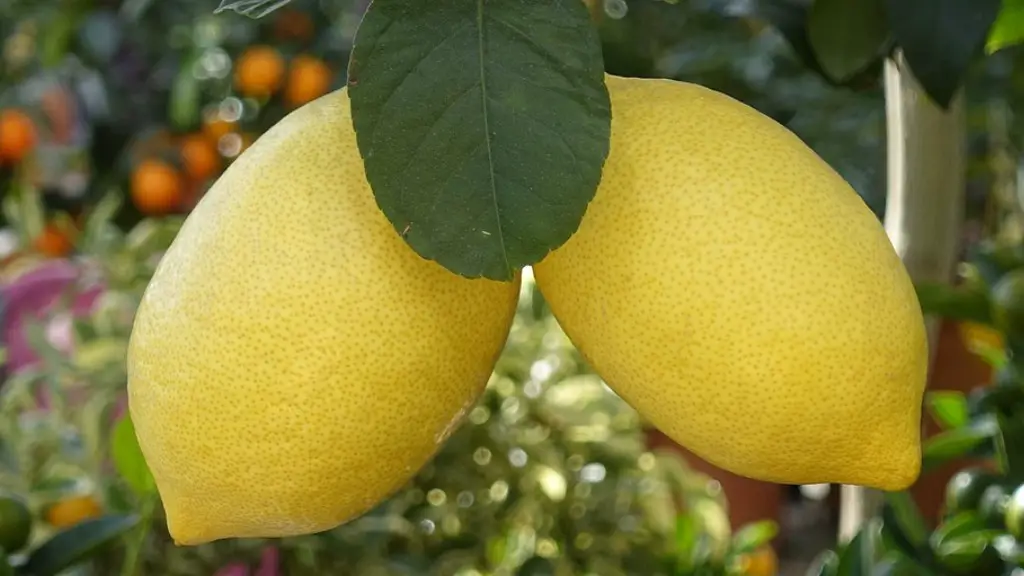Apples are vulnerable to damage from frost on the tree. Frost usually occurs during the spring or autumn months, when temperatures drop and the humidity stays high. High levels of moisture in the air coupled with the freezing temperatures can cause the water present in flower buds, young fruits and petals to freeze, causing them to droop and eventually fall off the tree.
Apples that are exposed to frost are more likely to rot, resulting in a loss of quality. The frost can also cause a decrease in blooms, less new fruit production, and even death of the tree, depending on the severity of the frost and the variety of the apple tree. That being said, some varieties of apples are more resistant to frost damage than others.
Farmers and gardeners can guard against frost damage by monitoring the temperature and humidity levels around their apple trees, as well as by providing adequate protection to the trees, such as a protective cover or mulch. Additionally, growers can ensure optimal production of apples by pruning and thinning out the fruit.
Although frost can cause damage to apples on the tree, it is not the only problem that growers need to be aware of. Insects and other pests can also damage the apples or the trees themselves. The best way to protect against insect and pest damage is to use an appropriate insect control method at the right time of the growing season.
Finally, although frost damage affects apples on the tree, improper care and harvesting can also damage the apples. It is important to pick the fruit gently, as well as to store it properly to reduce the risk of damage.
Regional Variations
In different regions and climates, the effects of frost can vary. Some climates are more likely to experience significant frost damage, while others rarely experience any frost at all. Certain apple varieties are more tolerant of environmental conditions and can remain productive with less damage than others.
In colder climates, certain varieties of apples can withstand extreme low temperatures for a long period of time and remain productive. Growers in colder areas should be sure to choose apple varieties that are well-suited for the climate. In warmer regions, Frost damage is less likely, but growers should still be aware of the possibility of frost damage, especially in the spring and autumn months.
Frost damage can also depend on the season and the altitude of the area. Wind chill can be a factor in some areas, as can humidity levels. All of these factors should be taken into consideration when choosing the right apple variety for a particular area.
Once the ideal variety of apple has been chosen and the climate and environmental conditions of the area have been taken into account, apple growers can rest assured that their trees will remain relatively safe from frost damage throughout the growing season.
However, it is important to remember that despite taking all the necessary precautions, frost damage can still occur, and thus it is important to be prepared to handle frosty conditions if they should arise.
How to Prepare for Frost Damage
Growers who are concerned about frost damage can take steps to prepare for it. An effective way to protect against frost damage is to use a protective cover or frost-protective blanket to wrap the tree. Alternatively, a layer of mulch around the tree can also help to protect the tree from cold temperatures.
Growers should also monitor temperatures and humidity levels in their area during the frosty months, so they can take action if necessary. Additionally, making sure that the tree is well-irrigated and properly fertilized can reduce the chances of frost damage.
It is also important to prune and thin out the fruit, as this can increase air circulation, reduce moisture and promote healthier growth. Lastly, growers should harvest the fruit quickly and gently so as to avoid any unnecessary bruising or rot.
By taking the necessary precautions, apple growers can ensure that their trees will be less prone to frost damage throughout the growing season and that the apples they harvest will remain of high quality.
Finally, although some varieties are more resistant to frost than others, no apple tree is completely immune to frost damage. Growers should always take the necessary steps to protect their trees and fruit from the effects of frost.
Preventing Further Damage
Once frost has occurred, it is important to take steps to mitigate further damage. Pruning damaged branches and removing any infected, dried blooms can help to keep the tree healthy, as well as to prevent the spread of any fungal diseases.
Growers should also inspect the fruit for signs of damage, such as discoloration, softness or mold. If the fruit is damaged, it can be harvested and used for processing, or it should be discarded to prevent further spread of disease.
It is also important to monitor the roots of the tree, as frost can also damage the roots, leading to decreased growth and productivity. If the roots are damaged, the tree should be protected from further injury by fertilizing and adding additional soil around the tree to encourage healthy growth.
Finally, if there is an unusually cold winter or if temperatures drop particularly low, it is possible to cover the trees with fabric or blankets to protect them from further damage. This measure can be especially useful in preventing significant losses of blossoms and fruit.
By taking the necessary steps to mitigate frost damage, apple growers can ensure that their trees remain healthy and productive.
Managing Frosted Fruit
Although some apple varieties are more resistant to frost damage than others, apples that have been subjected to frost can still suffer from diminished quality and nutritional value. If the frosted fruit is consumed, it is important to be aware of the risks and to take steps to ensure that the fruit is safe to eat.
Frosted apples should be harvested immediately and stored in a cool, dry place. It is also important to monitor the fruit for signs of rot and discard any visibly damaged or spoiled apples.
Frosted fruit can also be frozen for later use, although this will decrease the nutritional value of the fruit significantly. Additionally, frozen apples can be used for making apple juice or jams, provided that they are stored properly and processed in a food-safe environment.
Finally, frosted apples can provide food for wildlife, and they can be used as an organic mulch or compost material. This is a great way to put frosted fruit to good use, while also helping to maintain soil health.
By managing frosted fruits properly, apple growers can ensure that their fruit is safe to consume and can be used in multiple ways.
Conclusion
Frost can cause damage to apples on the tree, and therefore it is important for growers to take the necessary precautions to protect their trees. In addition to protective covers and mulch, growers should also monitor temperatures and humidity levels and prune and thin out their trees to prevent damage. Once frost has occurred, it is important to take steps to mitigate further damage and to inspect and store the fruit correctly. By doing so, apple growers can ensure that their trees remain healthy and productive and that the fruit they harvest is safe to eat.





